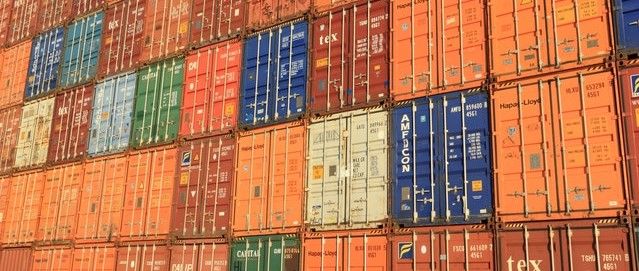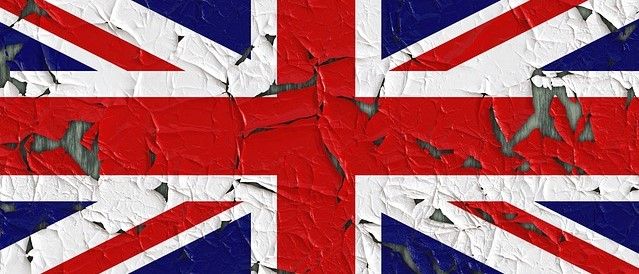Brexit day is now less than a month away. The day when trade between the UK and the EU will take a step into the unknown. Will there be tariffs at the border, will there be long queues of trucks waiting to cross the channel or will the transition be seamless?
With the chemicals industry in Europe possibly the most internationally interconnected of all industries there continues to be huge concerns over how the UK leaving the UK will play out.
What is the most likely outcome for chemical companies come Jan 1st, 2021?
According to analysts at Euler Hermes, a major trade credit insurance business, the worst-case scenario for the British chemicals industry is a £7 billion fall in exports should no replacement Free Trade Agreement (FTA) with the European Union be forthcoming.

“The chemicals industry is one of the most important exporting sectors in the UK, with £55bn of goods sent abroad each year,” said Ana Boata, the European economist at Euler Hermes. “With over half of the chemical industry’s exports heading to the EU, any decision to break away from continental trading partners would have knock-on effects on the supply chain and put jobs at risk.
While chemical production in those countries staying in the EU will be less impacted, the upheaval during a time of global pandemic could not be worse. Or could it?
Fears over a perfect storm of issues for European chemical companies grew recently over the upcoming publication of the EU’s Chemicals Strategy for Sustainability.
What is the EU’s Chemicals Strategy for Sustainability?
As a recent report in the Financial Times explains, the Chemicals Strategy for Sustainability is a policy document which, if implemented into EU law, hopes to both bolster and streamline the chemical industry’s regulatory framework.
The goal for such legislation is not only to reduce red-tape, but also to update health and safety policy and further protect the environment, all while making the EU chemicals sector more efficient and competitive against rivals in Asia and North America.
At the same time, according to analysts at Fleishman Hillard, the policies plan to work hand-in-hand with the “Biodiversity and Farm to Fork strategies to meet the Zero Pollution Europe ambition of the EU Green Deal, and it will support the delivery of the Circular Economy Action Plan.”
The strategy includes changes to regulations governing both REACH and laws on Classification and Labelling (CLP).

All combined, these policy changes are no small feat. As Sylvie Lemoine, Cefic’s (the European Chemical Industry Council) Executive Director of Product Stewardship, stated in a recent interview, “The Chemical Strategy’s proposals are massive, and they signal a regulatory paradigm shift.” Adding that, “Clearly every company and customer will be impacted [and] SMEs should not be left aside.”
But why is Brussels so insistent on such upheaval, what is their goal?
Well according to Bjorn Hansen, the Executive Director at ECHA, the vision is largely a streamlining of the law to improve innovation.
“In regulating better there are two things we need to address,” he explained in a recent interview. “We need to make sure that when we do an assessment of a chemical, it is done consistently across all pieces of legislation. So, what we understand as one substance, one assessment, we need to make sure that when we assess a chemical we have an assessment that can be used in multiple areas of regulation.” The hope is to, “… do it efficiently, in one go, and consistently, so that industry knows where we are going. They have one standard to meet and it is more predictable which promotes innovation.”
While many point to the added cost that the legislation requires for sustainability, many see Europe’s position as leaders towards the circular economy as a job creation role. One that helps to protect EU’s interests. Violaine Verougstraete, the Chemicals Management Director at Eurometaux, for one, is someone who believes that the EU Green Deal can be of benefit to the European chemicals industry.

“Producing a sustainable chemical needs to be cost-effective,” she said. “It should be economically feasible and prevent us seeing more benefits from importing a substance as an article from outside the EU, so that we can keep production here in the EU.”
Others in the chemical industry are more sceptical, especially given its timing.
“We face a double whammy with this chemical strategy and Brexit coming together,” said Marco Mensink, director-general of Cefic.
With the chemicals sector already facing a potential tariff bill of €1.5 billion from a hard Brexit, he believes that some speciality chemical production may no longer be viable with such large changes happening at the same time.
Part of those fears are the current plans that will exclude the UK chemicals sector from the EU’s REACH system.
Can the UK’s chemical industry handle its withdrawal from the largest piece of chemicals regulation in the world? How will European chemical companies adapt to having to meet UK REACH standards?
To find out more about this topic, read The EU Chemical Strategy and Brexit: A Perfect Storm? Part 2
Photo credit: freestocks.org from Pexels, Habib Ayoade on Unsplash, Pete Linforth from Pixabay, Pexels, mali maeder from Pexels, Call Me Fred on Unsplash, David Mark from Pixabay, Keith Beard from FreeImages & Laci Döme from Pixabay